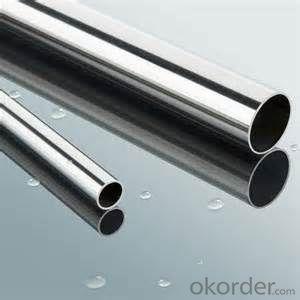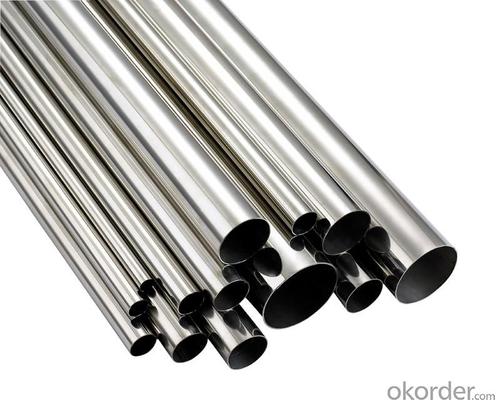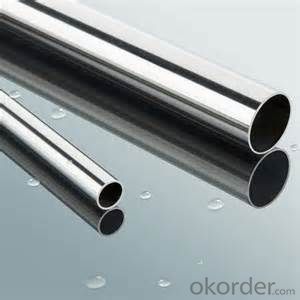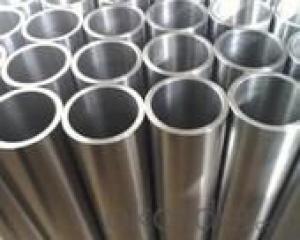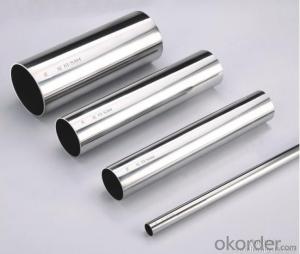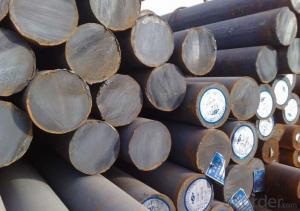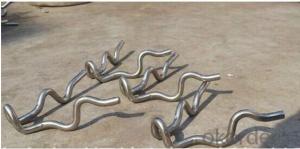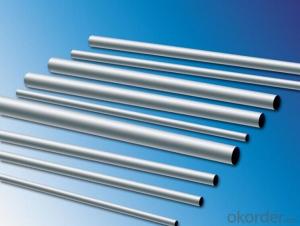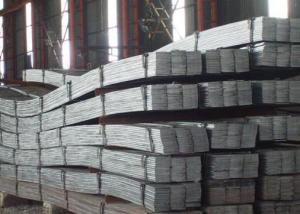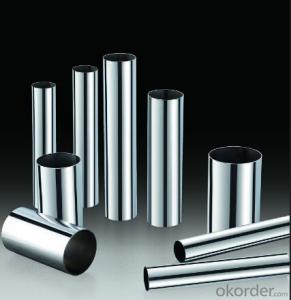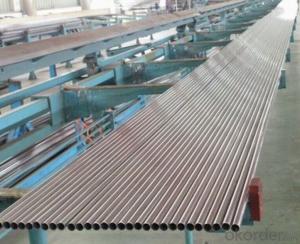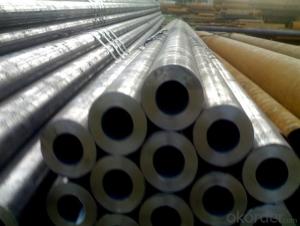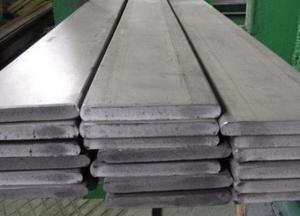STAINLESS STEEL 304 pipe materail
- Loading Port:
- China Main Port
- Payment Terms:
- TT OR LC
- Min Order Qty:
- -
- Supply Capability:
- -
OKorder Service Pledge
OKorder Financial Service
You Might Also Like
Description:
Stainless Steel Pipe
Material:
304 321 316 310
Packing:
In bundle
MOQ:
5 TONS
Comparison of standardized steels
| EN-standard Steel no. k.h.s DIN | EN-standard Steel name | SAE grade | UNS |
|---|---|---|---|
| 1.4109 | X65CrMo14 | 440A | S44002 |
| 1.4112 | X90CrMoV18 | 440B | S44003 |
| 1.4125 | X105CrMo17 | 440C | S44004 |
| | | 440F | S44020 |
| 1.4016 | X6Cr17 | 430 | S43000 |
| 1.4408 | G-X 6 CrNiMo 18-10 | 316 | |
| 1.4512 | X6CrTi12 | 409 | S40900 |
| | | 410 | S41000 |
| 1.4310 | X10CrNi18-8 | 301 | S30100 |
| 1.4318 | X2CrNiN18-7 | 301LN | |
| 1.4307 | X2CrNi18-9 | 304L | S30403 |
| 1.4306 | X2CrNi19-11 | 304L | S30403 |
| 1.4311 | X2CrNiN18-10 | 304LN | S30453 |
| 1.4301 | X5CrNi18-10 | 304 | S30400 |
| 1.4948 | X6CrNi18-11 | 304H | S30409 |
| 1.4303 | X5CrNi18-12 | 305 | S30500 |
| | X5CrNi30-9 | 312 | |
| 1.4541 | X6CrNiTi18-10 | 321 | S32100 |
| 1.4878 | X12CrNiTi18-9 | 321H | S32109 |
| 1.4404 | X2CrNiMo17-12-2 | 316L | S31603 |
| 1.4401 | X5CrNiMo17-12-2 | 316 | S31600 |
| 1.4406 | X2CrNiMoN17-12-2 | 316LN | S31653 |
| 1.4432 | X2CrNiMo17-12-3 | 316L | S31603 |
| 1.4435 | X2CrNiMo18-14-3 | 316L | S31603 |
| 1.4436 | X3CrNiMo17-13-3 | 316 | S31600 |
| 1.4571 | X6CrNiMoTi17-12-2 | 316Ti | S31635 |
| 1.4429 | X2CrNiMoN17-13-3 | 316LN | S31653 |
| 1.4438 | X2CrNiMo18-15-4 | 317L | S31703 |
| 1.4362 | X2CrNi23-4 | 2304 | S32304 |
| 1.4462 | X2CrNiMoN22-5-3 | 2205 | S31803/S32205 |
| 1.4539 | X1NiCrMoCu25-20-5 | 904L | N08904 |
| 1.4529 | X1NiCrMoCuN25-20-7 | | N08926 |
| 1.4547 | X1CrNiMoCuN20-18-7 | 254SMO | S31254 |
Stainless steel’s resistance to corrosion and staining, low maintenance and familiar lustre make it an ideal material for many applications. There are over 150 grades of stainless steel, of which fifteen are most commonly used. The alloy is milled into coils, sheets, plates, bars, wire, and tubing to be used in cookware, cutlery, household hardware, surgical instruments, major appliances, industrial equipment (for example, in sugar refineries) and as an automotive and aerospace structural alloy and construction material in large buildings. Storage tanks and tankers used to transport orange juice and other food are often made of stainless steel, because of its corrosion resistance. This also influences its use in commercial kitchens and food processing plants, as it can be steam-cleaned and sterilized and does not need paint or other surface finishes.
Stainless steel is used for jewelry and watches with 316L being the type commonly used for such applications. It can be re-finished by any jeweler and will not oxidize or turn black.
Some firearms incorporate stainless steel components as an alternative to blued or parkerized steel. Some handgun models, such as the Smith & Wesson Model 60 and the Colt M1911 pistol, can be made entirely from stainless steel. This gives a high-luster finish similar in appearance to nickel plating. Unlike plating, the finish is not subject to flaking, peeling, wear-off from rubbing (as when repeatedly removed from a holster), or rust when scratched.
- Q: What is the difference between 304L and 316L stainless steel pipes?
- 304L and 316L, both stainless steel pipe types, have distinct differences in their chemical composition and specific properties. With a lower carbon content, 304L stainless steel is a variation of 304 stainless steel. This characteristic grants it greater resistance to sensitization, i.e., the formation of chromium carbide at grain boundaries, which can lead to intergranular corrosion. Due to this lower carbon content, 304L stainless steel pipes are commonly utilized in environments where sensitization is a concern, such as welding applications or corrosive settings. Conversely, 316L stainless steel is an austenitic stainless steel that boasts the inclusion of molybdenum. This element enhances its corrosion resistance when compared to 304L stainless steel. The addition of molybdenum strengthens its ability to combat pitting and crevice corrosion, making it suitable for use in more aggressive environments like marine or chemical processing settings. Regarding mechanical properties, 316L stainless steel pipes generally exhibit higher tensile strength and yield strength than 304L stainless steel pipes. Consequently, 316L stainless steel pipes are more suited for applications necessitating greater strength and durability. In summary, the primary disparity between 304L and 316L stainless steel pipes lies in their chemical composition and corrosion resistance properties. 304L stainless steel pipes offer enhanced resistance to sensitization, while 316L stainless steel pipes provide heightened corrosion resistance, especially in more aggressive environments. The selection between these two types depends on the specific requirements of the application and the environment in which the pipes will be employed.
- Q: Are stainless steel pipes suitable for sewage treatment plants?
- Yes, stainless steel pipes are suitable for sewage treatment plants. Stainless steel is a highly durable and corrosion-resistant material, making it well-suited for the harsh and corrosive environment found in sewage treatment plants. The high resistance to corrosion prevents the pipes from deteriorating over time, ensuring a longer lifespan and reducing the need for frequent maintenance or replacements. Additionally, stainless steel pipes have excellent hygienic properties, which is crucial for sewage treatment plants to maintain proper sanitation. The smooth surface of stainless steel pipes prevents the accumulation of bacteria, biofilm, and other contaminants, making it easier to clean and maintain a high level of cleanliness. Furthermore, stainless steel is environmentally friendly as it is 100% recyclable, contributing to sustainable practices in sewage treatment plants. Overall, stainless steel pipes are a reliable and suitable choice for sewage treatment plants due to their durability, corrosion resistance, hygienic properties, and environmental friendliness.
- Q: Are stainless steel pipes suitable for pharmaceutical factories?
- Yes, stainless steel pipes are suitable for pharmaceutical factories. Stainless steel is a popular material choice in the pharmaceutical industry due to its excellent corrosion resistance and hygienic properties. It is resistant to various chemicals and can withstand high temperatures and pressures, making it ideal for transporting and storing pharmaceutical products, chemicals, and other fluids. Stainless steel pipes also have a smooth surface, which promotes easy cleaning and prevents the accumulation of bacteria, ensuring the pharmaceutical products remain uncontaminated. Furthermore, stainless steel is a durable material with a long lifespan, reducing the need for frequent replacements and maintenance. Overall, stainless steel pipes are a reliable and suitable choice for use in pharmaceutical factories.
- Q: What are the different types of stainless steel pipe tees?
- There are several different types of stainless steel pipe tees, each designed for specific applications and requirements. 1. Equal Tee: This type of tee has three outlets of the same size, forming a 90-degree angle. It is commonly used to branch off or combine flow in a pipeline with equal diameters. 2. Reducing Tee: As the name suggests, a reducing tee has one outlet smaller than the other two. It is used to connect pipes of different sizes, allowing for a smooth transition in the flow of fluids or gases. 3. Barred Tee: This tee has a bar welded across the branch opening, providing additional support and reinforcement. It is commonly used in high-pressure or high-temperature applications to prevent stress concentration and potential failure. 4. Lateral Tee: A lateral tee has one outlet at a 45-degree angle, allowing for a branch connection at a different direction. It is often used in situations where a pipeline needs to be diverted or connected at an angle. 5. Cross Tee: A cross tee has four outlets forming a cross-shaped configuration. It is used when there is a need to split or combine flow in multiple directions, commonly found in complex piping systems. 6. Unions and Socket Weld Tee: These types of tees have sockets or unions at the branch connection, allowing for easy disassembly and maintenance. They are often used in applications where regular inspection, cleaning, or replacement is required. 7. Threaded Tee: Threaded tees have threaded branch connections, which can be screwed onto the pipe without the need for welding. They are commonly used in low-pressure applications or when frequent disassembly is required. Each type of stainless steel pipe tee offers specific advantages and is selected based on the requirements of the particular piping system, such as flow rates, pressure, temperature, and compatibility with the fluids or gases being transported.
- Q: What is the difference between 304J2 and 316J2 stainless steel pipes?
- 304J2 and 316J2 stainless steel pipes differ primarily in their chemical composition and the presence of specific elements. 304J2 stainless steel is a variation of the popular 304 grade. It possesses approximately 18-20% chromium and 8-10.5% nickel, resulting in commendable corrosion resistance, particularly in mildly corrosive surroundings. Nevertheless, its molybdenum content is lower compared to 316J2. In contrast, 316J2 stainless steel is a variant of the 316 grade. It contains roughly 16-18% chromium, 10-14% nickel, and 2-3% molybdenum. The augmented molybdenum content heightens its resistance to corrosion, making it suitable for more aggressive settings like marine or chemical applications. Regarding mechanical properties, both grades exhibit similar tensile and yield strength. However, due to the elevated levels of nickel and molybdenum, 316J2 stainless steel pipes generally display superior resistance to pitting and crevice corrosion. Ultimately, the selection between 304J2 and 316J2 stainless steel pipes relies on the specific application and the extent of corrosion resistance desired. While 304J2 suffices for general use in mildly corrosive environments, 316J2 is preferable when exposure to more aggressive conditions is anticipated.
- Q: What is the difference between Type 304H and Type 316H stainless steel pipes?
- The main difference between Type 304H and Type 316H stainless steel pipes lies in their composition and corrosion resistance properties. Type 304H stainless steel contains higher carbon content, making it more suitable for high-temperature applications. On the other hand, Type 316H stainless steel has higher levels of chromium and nickel, offering superior corrosion resistance, particularly in environments with chloride ions. Ultimately, the choice between the two depends on the specific requirements of the application in terms of temperature, corrosion resistance, and other factors.
- Q: Can stainless steel pipes be used for oil and gas pipelines?
- Yes, stainless steel pipes can be used for oil and gas pipelines. Stainless steel is known for its excellent corrosion resistance, making it a suitable material for transporting oil and gas, which can contain corrosive elements. Stainless steel pipes can withstand high temperatures and pressures, making them ideal for oil and gas applications. Additionally, stainless steel is durable and long-lasting, reducing the risk of leaks or failures in the pipeline system. The use of stainless steel pipes for oil and gas pipelines ensures the integrity and reliability of the infrastructure, protecting both the environment and public safety.
- Q: How do stainless steel pipes compare to polyethylene pipes?
- Stainless steel pipes have higher durability and strength compared to polyethylene pipes. They are resistant to corrosion, heat, and pressure, making them suitable for diverse applications in industries such as oil and gas, construction, and water treatment. On the other hand, polyethylene pipes are more flexible, lightweight, and cost-effective, making them ideal for underground water and gas distribution systems. The choice between stainless steel and polyethylene pipes depends on factors like the specific application, budget, and environmental conditions.
- Q: Are stainless steel pipes suitable for water treatment plants?
- Indeed, water treatment plants find stainless steel pipes to be a fitting choice. Stainless steel possesses resistance against corrosion, enabling it to endure the harsh circumstances commonly present within water treatment plants, such as exposure to chemicals, high temperatures, and high pressure. Moreover, its durability is exceptional, guaranteeing an extended lifespan and diminishing the necessity for frequent replacements. The smooth inner surface of stainless steel pipes further prevents the accumulation of deposits and enhances the efficiency of water flow. Furthermore, stainless steel upholds hygienic standards and refrains from leaching harmful substances into the water, thus ensuring the quality and safety of the treated water.
- Q: Are stainless steel pipes suitable for nuclear power plants?
- Yes, stainless steel pipes are suitable for nuclear power plants. Stainless steel is widely used in nuclear power plants due to its excellent corrosion resistance properties, high strength, and ability to withstand high temperatures and pressures. These pipes are used for various purposes in a nuclear power plant, including carrying coolant, steam, and other fluids. Stainless steel pipes are highly resistant to corrosion, which is crucial in preventing leakages and maintaining the integrity of the system. Additionally, stainless steel is also resistant to radiation damage, making it a suitable material for nuclear power plant applications.
Send your message to us
STAINLESS STEEL 304 pipe materail
- Loading Port:
- China Main Port
- Payment Terms:
- TT OR LC
- Min Order Qty:
- -
- Supply Capability:
- -
OKorder Service Pledge
OKorder Financial Service
Similar products
Hot products
Hot Searches
Related keywords

